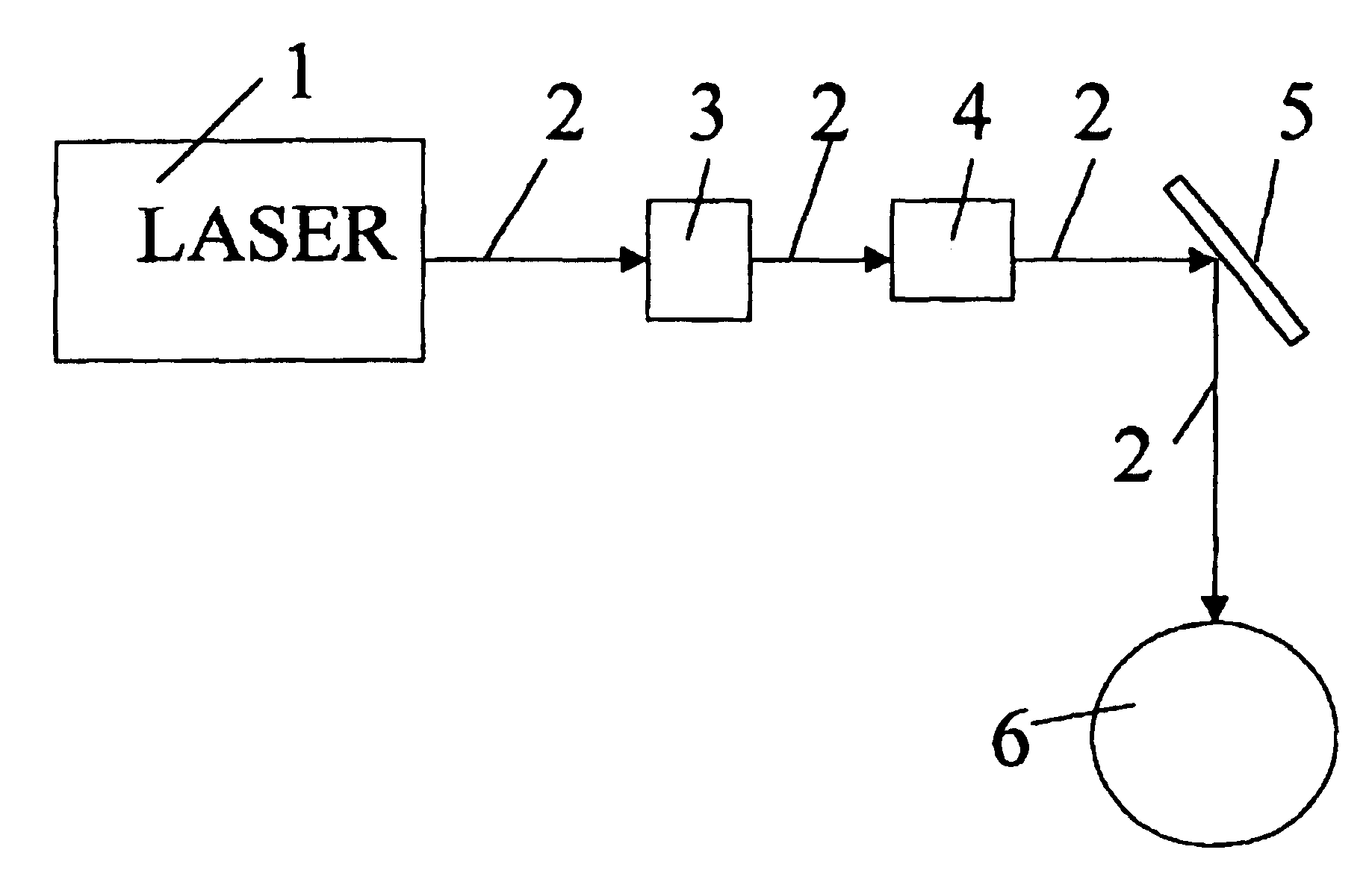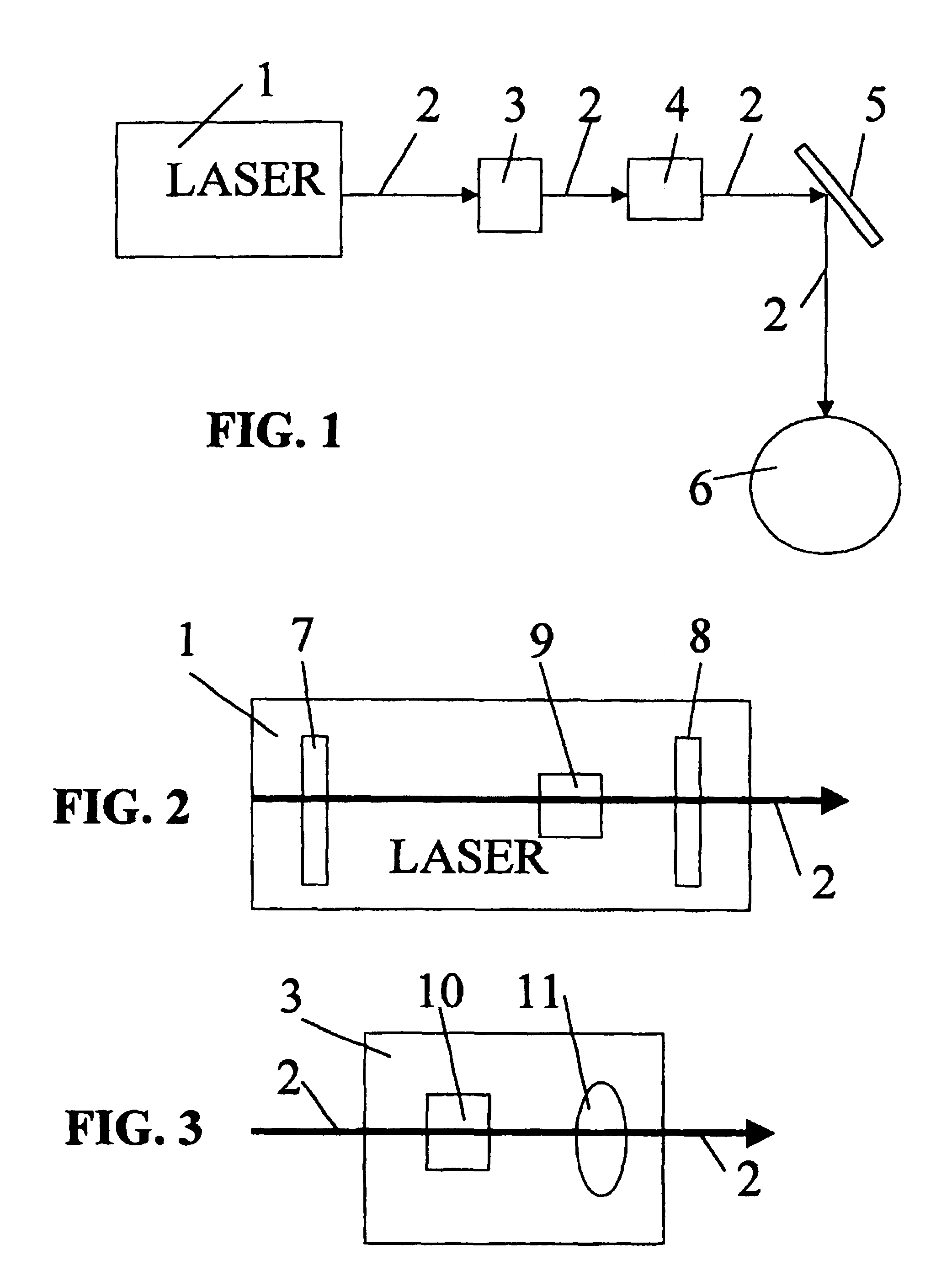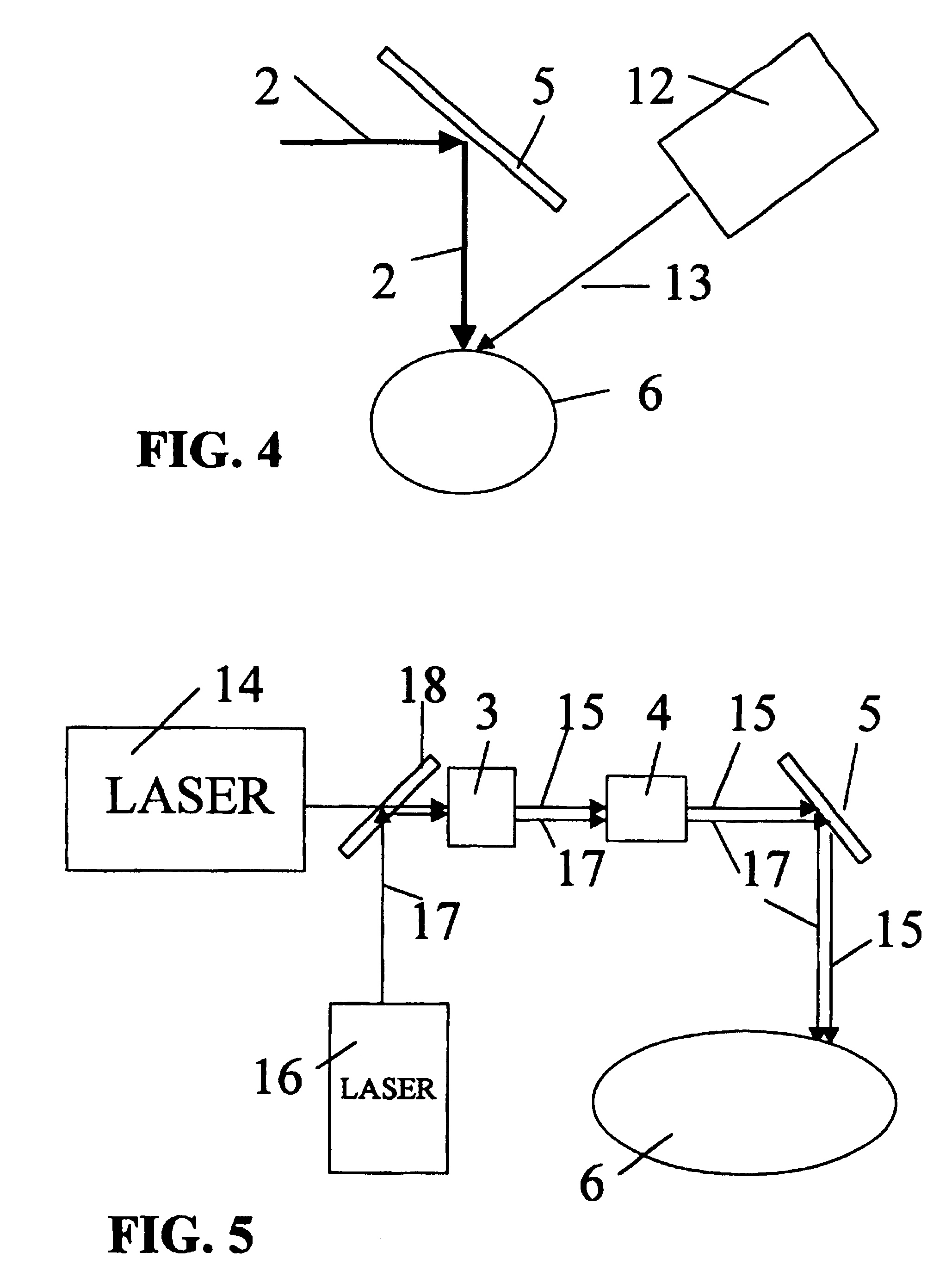Refractive surgery and presbyopia correction using infrared and ultraviolet lasers
a presbyopia correction and infrared laser technology, applied in the field of refractive surgical systems, can solve the problems of short lifetime of laing gas, unstable and short laing gas life, uv laser system, etc., and achieve the effect of reducing the thermal effect of the corneal tissue, reducing the shock wave and uneven hydration level on the corneal surface, and easy assignmen
- Summary
- Abstract
- Description
- Claims
- Application Information
AI Technical Summary
Benefits of technology
Problems solved by technology
Method used
Image
Examples
Embodiment Construction
[0039]We should first briefly present some of the theoretical background of the present invention regarding to the ablation efficiency or the procedure speed, and the ablation threshold, fluency and intensity, two of the main objectives of the present invention. Greater detail regarding to the theoretical aspects can be found in a paper published by the present inventor in: “Critical Review of Refractive Surgical Lasers”, Optical Engineering, Vol. 34, pp.668-675, (1995).
[0040]Given a laser energy per pulse of E (in mJ), a fluency of F (in mJ / cm2) may be achieved by focusing the beam into an area of F and F=E / A. For corneal tissue ablation, either photoablation or photomechanical ablation (defined by reference of Jacques, S. L., “Laser-tissue Interactions; Photochemical, Photothermal and Photomechanical,” Lasers in General Surgery, 72(3), 531-558,1992). For an ablation to occur, the laser intensity I (in MW / cm2) must be higher than the an ablation threshold (AT) of about (10-20) MW / c...
PUM
 Login to View More
Login to View More Abstract
Description
Claims
Application Information
 Login to View More
Login to View More - R&D
- Intellectual Property
- Life Sciences
- Materials
- Tech Scout
- Unparalleled Data Quality
- Higher Quality Content
- 60% Fewer Hallucinations
Browse by: Latest US Patents, China's latest patents, Technical Efficacy Thesaurus, Application Domain, Technology Topic, Popular Technical Reports.
© 2025 PatSnap. All rights reserved.Legal|Privacy policy|Modern Slavery Act Transparency Statement|Sitemap|About US| Contact US: help@patsnap.com



